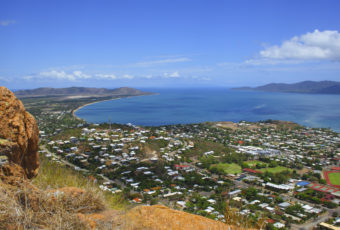Monash School of Geosciences study giant earthquakes
A team of international researchers, led by Monash University’s Associate Professor Wouter Schellart, have developed a new global map of subduction zones—which occur at the edge of tectonic plates—to predict which ones are capable of generating giant earthquakes.

The new research, published in the journal Physics of the Earth and Planetary Interiors, comes nine years after the giant earthquake and tsunami in Sumatra in December 2004, which devastated the region and many other areas surrounding the Indian Ocean, and killed more than 200,000 people.
Since then two other giant earthquakes have occurred at subduction zones, one in Chile in February 2010 and one in Japan in March 2011, which both caused massive destruction, killed many thousands of people and resulted in billions of dollars of damage.
Most earthquakes occur at the boundaries between tectonic plates that cover the Earth’s surface. The largest earthquakes on Earth only occur at subduction zones, plate boundaries where one plate sinks (subducts) below the other into the Earth’s interior. So far, seismologists have recorded giant earthquakes for only a limited number of subduction zone segments. But accurate seismological records go back to only ~1900, and the recurrence time of giant earthquakes can be many hundreds of years.
“The main question is, are all subduction segments capable of generating giant earthquakes, or only some of them? And if only a limited number of them, then how can we identify these,” Dr Schellart said.
Dr Schellart, of the Monash School of Geosciences, and Professor Nick Rawlinson from the University of Aberdeen in Scotland used earthquake data going back to 1900 and data from subduction zones to map the main characteristics of all active subduction zones on Earth. They investigated if those subduction segments that have experienced a giant earthquake share commonalities in their physical, geometrical and geological properties.
They found that the main indicators include the style of deformation in the plate overlying the subduction zone, the level of stress at the subduction zone, the dip angle of the subduction zone, as well as the curvature of the subduction zone plate boundary and the rate at which it moves.
Through these findings Dr Schellart has identified several subduction zone regions capable of generating giant earthquakes, including the Lesser Antilles, Mexico-Central America, Greece, the Makran, Sunda, North Sulawesi and Hikurangi.
“For the Australian region subduction zones of particular significance are the Sunda subduction zone, running from the Andaman Islands along Sumatra and Java to Sumba, and the Hikurangi subduction segment offshore the east coast of the North Island of New Zealand. Our research predicts that these zones are capable of producing giant earthquakes,” Dr Schellart said.
“Our work also predicts that several other subduction segments that surround eastern Australia (New Britain, San Cristobal, New Hebrides, Tonga, Puysegur), are not capable of producing giant earthquakes.”
Monash University’s School of Geosciences is within the Faculty of Science. The faculty is one of the largest science faculties in Australia. It is recognized for conducting cutting-edge research with well-equipped laboratories and sophisticated equipment.
Geoscience is a multidisciplinary science that seeks to understand the Earth’s dynamic systems. The geosciences program provides students with an insight into both present-day processes and how the Earth has changed over geological time, including an understanding of the Earth’s chemical, physical and biological systems. The Monash School of Geosciences provides the education and training using world-class facilities for research and teaching.
*

































Ask A Question
Ask us about your program of interest, or if you have a question about our services.
CONTACT US TODAY